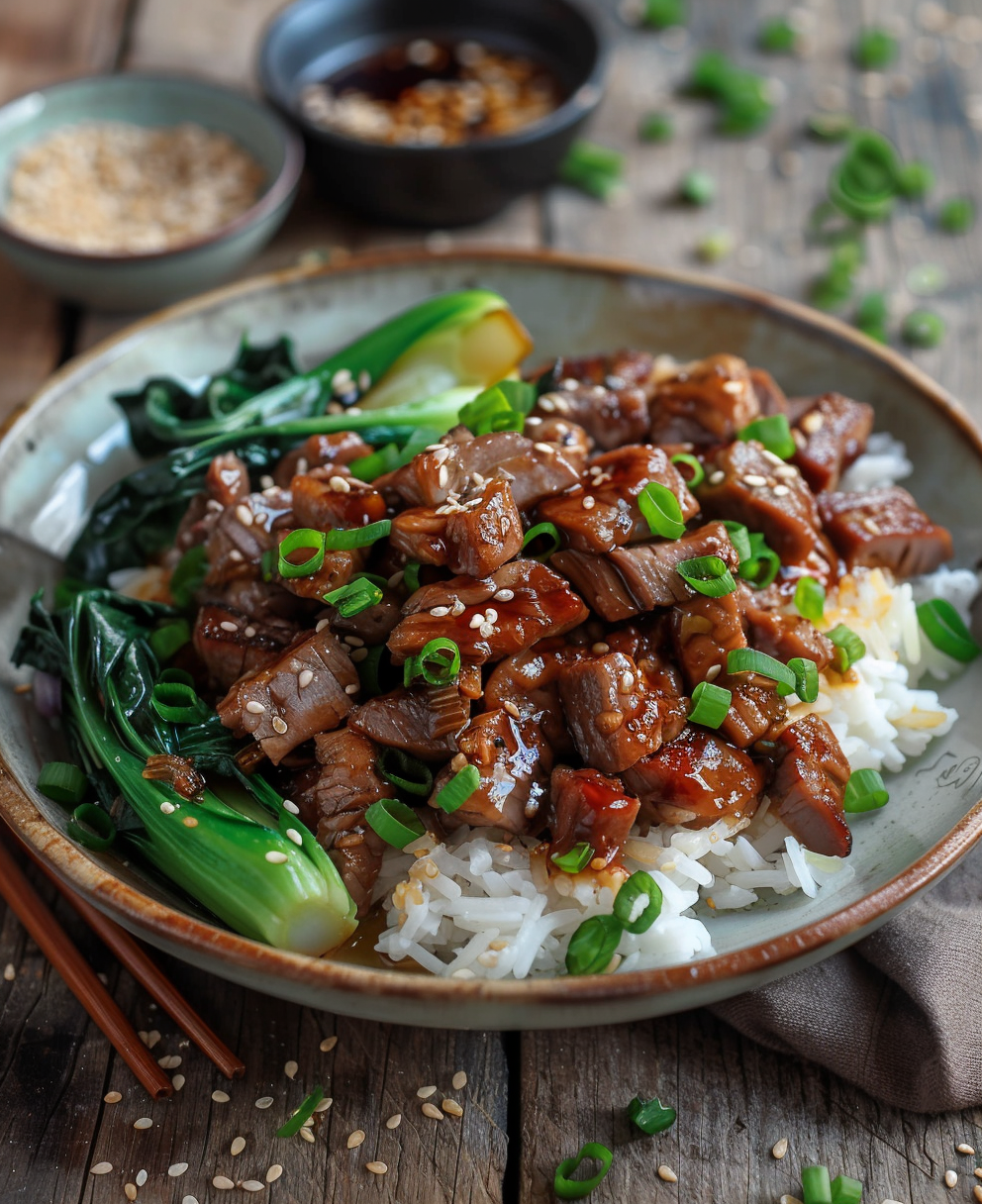
Why I Can’t Get Enough of Asian BBQ Pork
I still remember the first time I tried Asian BBQ pork. The sweet, savory aroma hit me before I even took a bite. It was love at first taste. That tender, juicy meat with its glossy red exterior felt like a flavor celebration in my mouth. Since then, this dish has become a staple in my kitchen and on my dining table. And it’s not just me—Asian BBQ pork is winning hearts across the USA, popping up in restaurants, food trucks, and home kitchens everywhere.
What makes this dish so special? It’s more than just food—it’s a bridge between cultures. Every bite tells a story of rich culinary traditions passed down through generations. From Chinese BBQ pork belly to Korean BBQ pork, each variation brings something unique to the table. In this article, I’ll share easy recipes, foolproof cooking techniques, serving ideas, and answers to common questions like Why is Asian barbecue pork red? By the end, you’ll feel confident making your own authentic char siu recipe or exploring other authentic Chinese pork recipes.
Understanding the Basics of Asian BBQ Pork
So, what exactly is Asian BBQ pork? At its core, it’s marinated pork that’s roasted or grilled until caramelized and bursting with flavor. You might know it by its Cantonese name, char siu, which translates to “fork-roasted.” This BBQ pork fillet is a star in Chinese cuisine, often served sliced as a main dish, stuffed into buns, or added to fried rice. Its popularity has spread far beyond China, inspiring dishes like Korean bulgogi and Japanese teriyaki.
Asian BBQ pork isn’t just delicious—it’s versatile. Whether you’re using pork belly, tenderloin, or shoulder, there’s an authentic Chinese pork recipe for every cut. One of my favorite discoveries was finding a slow cooker Chinese BBQ pork recipe. No fancy equipment needed—just toss everything in the pot and let it work its magic. Trust me, it’s worth trying if you’re short on time but still want amazing results.
I discovered this dish during a trip to San Francisco’s Chinatown years ago. I wandered into a tiny shop and ordered something called char siu bao, a steamed bun filled with BBQ pork. One bite, and I was hooked. Back home, I spent weeks experimenting with marinades and cooking methods to recreate that same magic. Now, I can confidently say I’ve nailed it—and I’m here to help you do the same.
The Red Hue Mystery: Why Is Asian Barbecue Pork Red?
If you’ve ever wondered why Asian barbecue pork has that vibrant red color, you’re not alone. It’s one of the most common questions people ask about this dish. The secret lies in the ingredients used in the marinade. Traditional recipes often include red fermented bean curd, a key player in creating that signature hue. For those looking for a shortcut, modern cooks sometimes use food coloring to achieve the same effect.
Let me break it down for you:
- Red fermented bean curd: Adds depth, umami, and natural red tones.
- Hoisin sauce: Contributes sweetness and a hint of reddish-brown color.
- Food coloring: Optional, but commonly used for a brighter look.
When I first started making authentic char siu, I skipped the food coloring because it felt too artificial. But after tasting how much visual appeal it added without changing the flavor, I gave it a try. Turns out, presentation matters! That glossy red finish makes the dish irresistible.
Here’s a fun fact: The red color also symbolizes good fortune in Chinese culture, which is why char siu is often served during celebrations. Next time you see those ruby-red slices, you’ll know they’re not just beautiful—they’re meaningful too.
Tips for Perfectly Tender Pork
A lot of people ask, How do Chinese restaurants make pork so tender? The answer lies in technique and ingredient choice. Here are some tricks I’ve picked up along the way:
- Choose the right cut. Pork belly is fatty and flavorful, while tenderloin is leaner and quicker to cook.
- Marinate overnight. Time allows the flavors to penetrate deeply into the meat.
- Use baking soda. A small pinch in the marinade helps break down proteins, making the pork extra tender.
- Cook low and slow. Whether you’re roasting or using a slow cooker, patience pays off.
These tips transformed my Chinese BBQ pork near me search into a DIY project. Instead of hunting for takeout, I now whip up my own version whenever the craving hits. Plus, homemade always tastes better, doesn’t it?
Final Thoughts Before We Dive In
By now, you probably understand why Asian BBQ pork is such a crowd-pleaser. It’s flavorful, adaptable, and steeped in tradition. Whether you’re new to cooking Chinese dishes or already have a few Chinese recipes using pork tenderloin under your belt, this guide will give you all the tools you need to succeed.
In the next sections, we’ll dive deeper into easy-to-follow recipes, step-by-step instructions, and creative ideas for serving your masterpiece. Stay tuned—you’re about to become a char siu pro!
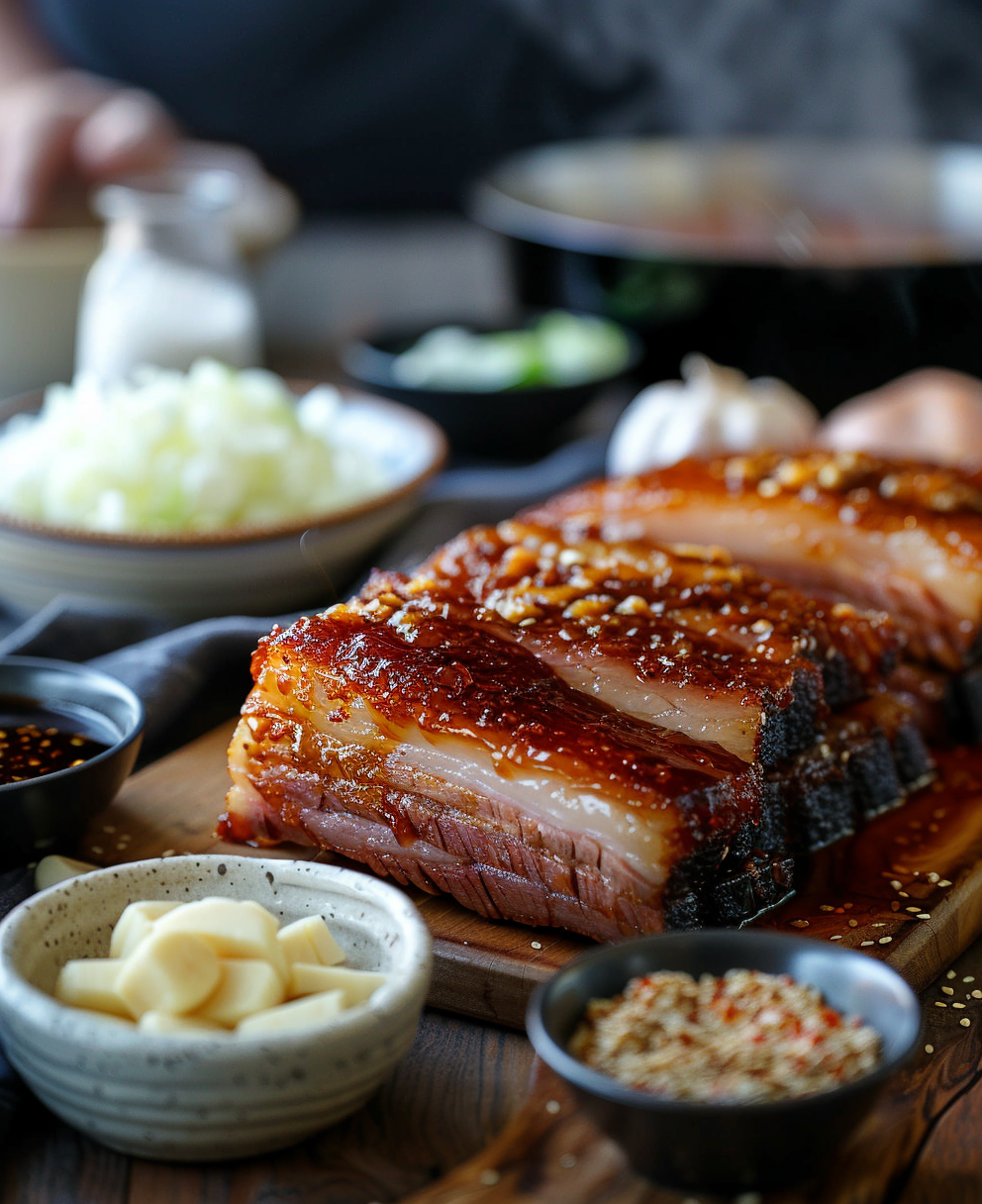
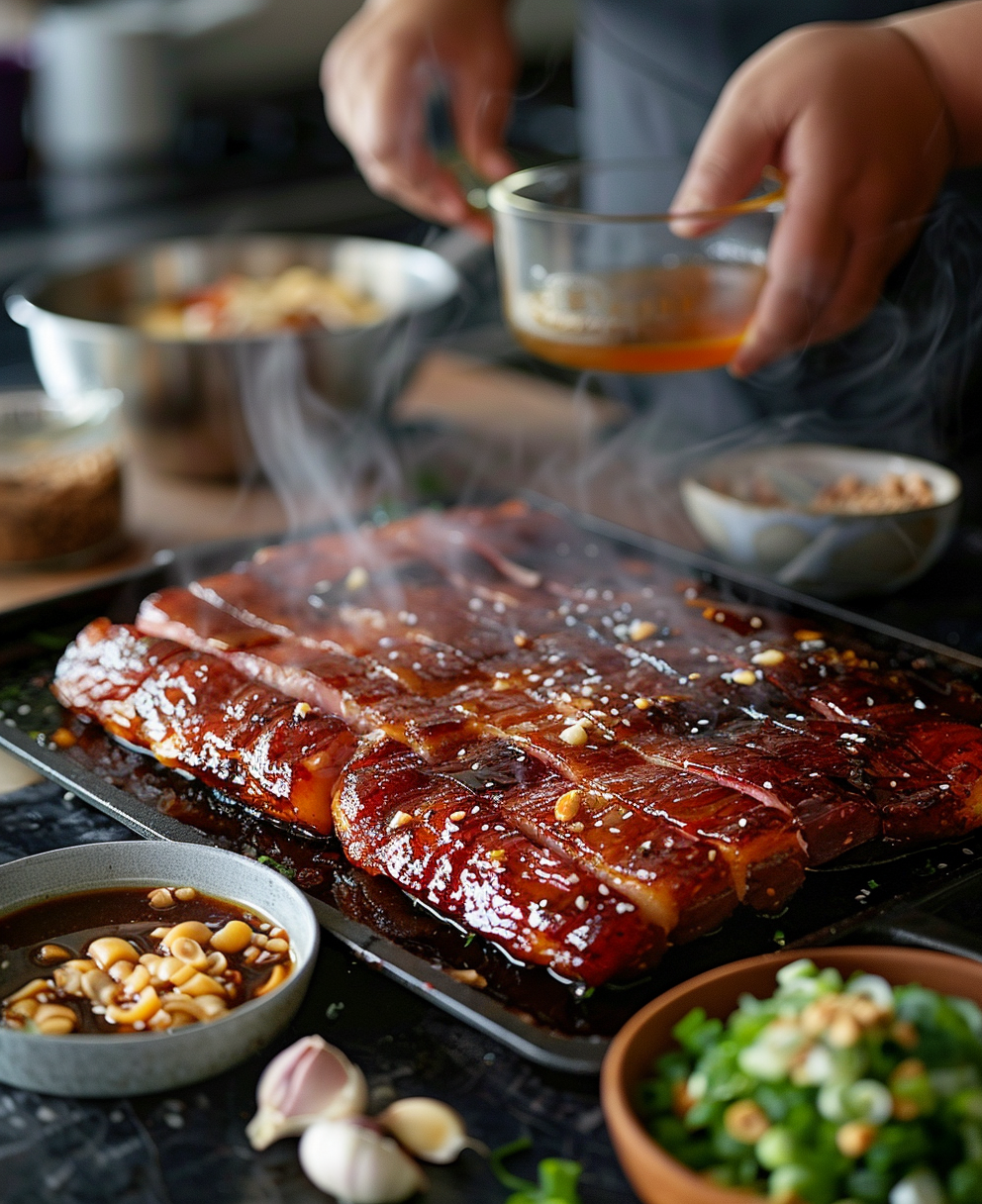
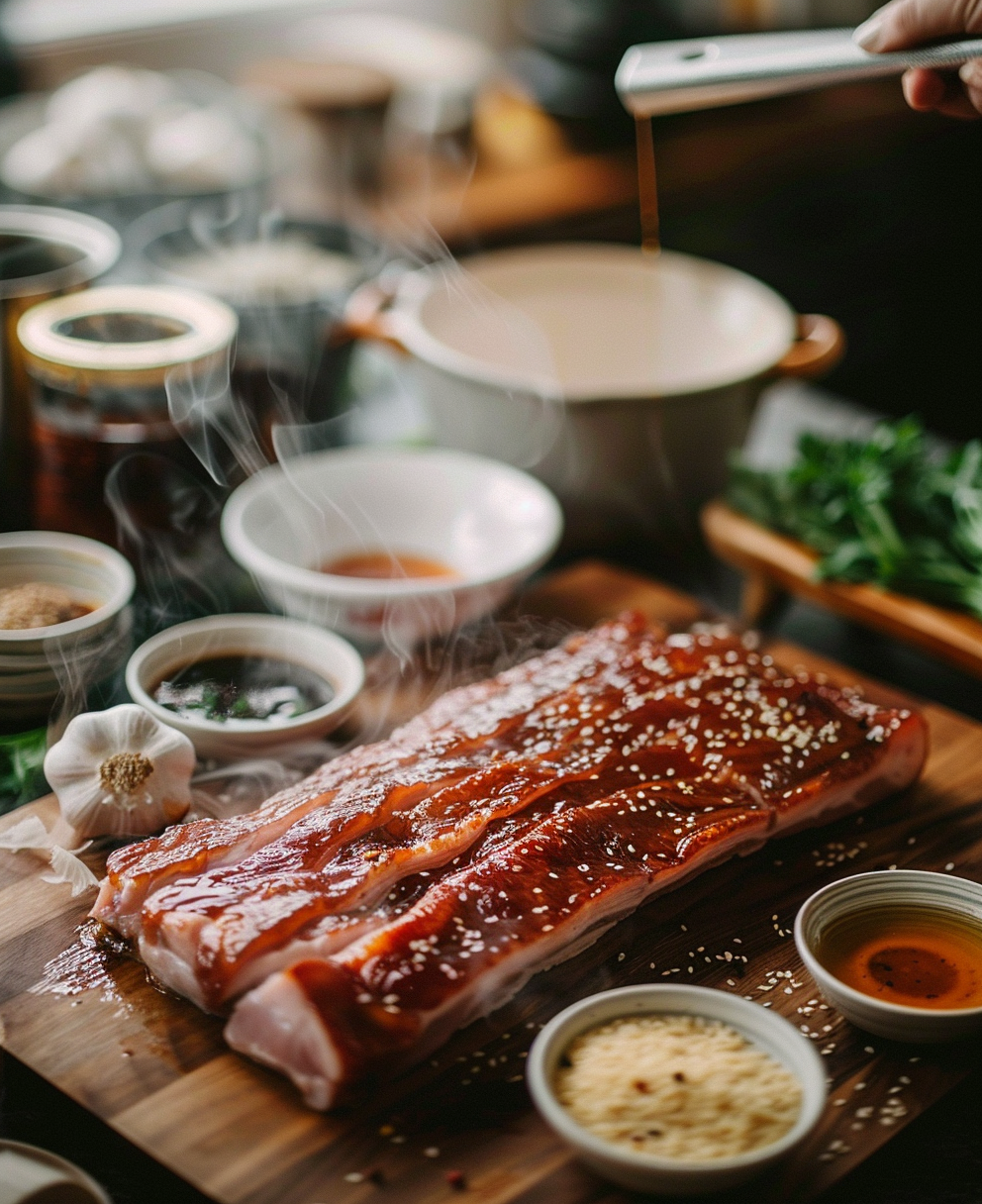
How to Make Tender and Juicy Asian BBQ Pork
You know, there’s something almost magical about biting into a piece of Asian BBQ pork that’s perfectly tender and juicy. It feels like the meat just melts in your mouth, leaving behind this explosion of sweet, savory, and smoky flavors. But here’s the deal—it’s not magic. It’s all about technique, timing, and knowing the right tricks. Funny enough, I used to think only professional chefs or Chinese restaurants could achieve that level of perfection. Spoiler alert: they don’t have any secret powers. Let me show you how you can replicate restaurant-quality results at home.
Mastering the Art of Tenderness
When people ask me, How do Chinese restaurants make pork so tender? I always start with one word: patience. See, tenderness isn’t an accident—it’s a combination of choosing the right cut, marinating properly, and cooking slow. For instance, pork belly is my go-to for Chinese BBQ pork belly. Why? Because its fat content keeps the meat insanely moist during cooking. On the flip side, if you’re aiming for something leaner, try using pork tenderloin. It cooks faster but still delivers amazing results when handled correctly.
Marinating is where the real magic happens. A good marinade doesn’t just add flavor; it also tenderizes the meat. My favorite trick? Adding a tiny pinch of baking soda to the mix. Trust me, it sounds strange, but it works wonders by breaking down tough muscle fibers. Oh, and don’t skimp on time—overnight marination is key. This gives the flavors plenty of time to sink deep into the meat. By the way, if you’re short on time, check out this homemade Chinese BBQ sauce recipe. It’s a game-changer for quick yet flavorful marinades.
Now, let’s talk about cooking methods. Slow and steady wins the race here. Whether you’re roasting in the oven or using a slow cooker Chinese BBQ pork method, low heat ensures the meat stays juicy. Personally, I love using my slow cooker because it’s practically foolproof. Just toss everything in, set it, and forget it until dinner time. Speaking of slow cookers, if you’ve never tried making BBQ chicken in a crock pot, you’re missing out. Same principle applies, and it’s equally delicious!
Step-by-Step Recipe Walkthrough
Alright, let’s get hands-on. Making authentic char siu at home might sound intimidating, but it’s actually pretty straightforward once you break it down. Here’s how I approach it:
First up, the marinade. You’ll need soy sauce, honey (or sugar), garlic, ginger, five-spice powder, rice wine, and a splash of sesame oil. If you want that signature red color, grab some red fermented bean curd or even a drop of food coloring. Mix it all together, then slather it generously over your pork. Let it sit in the fridge overnight—or at least four hours—to really soak up those flavors.
Next comes the cooking part. Preheat your oven to 350°F (175°C) and place the pork on a wire rack over a baking sheet. This setup lets the excess fat drip away while ensuring the meat gets evenly cooked. Roast for about 30 minutes, then brush on another layer of marinade for extra stickiness and shine. Finish it off under the broiler for a few minutes to achieve that caramelized crust we all crave.
For beginners who aren’t quite ready to tackle this at home, no worries. There are tons of places offering Chinese BBQ pork near me options. Grab a takeout order, taste what you’re aiming for, and then give it a shot yourself. Pro tip: Pair your practice batch with steamed rice and stir-fried veggies for a complete meal. Which brings me to my next point…
Serving Suggestions for Asian BBQ Pork
So you’ve nailed the recipe—now what? What to serve with char siu pork is just as important as the dish itself. After all, nobody wants to eat plain slices of pork without something to balance it out. Here’s the thing: balance is key in authentic Chinese pork recipes. Think light, refreshing sides that complement the richness of the BBQ pork.
Steamed jasmine rice is a classic choice. It’s simple, fluffy, and acts as the perfect base for soaking up all those tasty juices. Stir-fried vegetables like bok choy, snap peas, or broccoli are great too. They add crunch and color to your plate, making the meal feel more wholesome. And hey, if you’re feeling adventurous, whip up a batch of lo mein noodles. Toss them with a bit of soy sauce, scallions, and maybe even leftover bits of pork for a hearty twist.
Here’s a fun idea: turn your BBQ pork fillet into sliders. Slice the pork thinly, pile it onto mini buns, and top with pickled cucumbers or onions for a tangy kick. Or, go full fusion and pair it with meatballs smothered in grape jelly and BBQ sauce. Sounds wild, right? But trust me, the combo works.
Oh, and don’t forget breakfast ideas! Leftover char siu makes killer fried rice or omelets. Dice it up, toss it with eggs, soy sauce, and chopped green onions, and you’ve got yourself a protein-packed morning feast. Honestly, the possibilities are endless. One of my favorite lazy-day meals is pairing it with a side of coleslaw. The creamy dressing contrasts beautifully with the sticky, savory pork.
By the way, if you’re hosting a dinner party, consider serving your authentic char siu recipe family-style. Arrange slices of pork on a large platter alongside bowls of rice, noodles, and veggie dishes. Encourage guests to build their own plates—it’s interactive and super satisfying. Plus, everyone loves digging into a spread like that.
Lastly, don’t underestimate the power of presentation. Garnish your dish with a sprinkle of toasted sesame seeds or chopped cilantro. Not only does it look Instagram-worthy, but it also adds a pop of freshness. Little details like these can elevate your meal from “good” to “wow.”
In conclusion, whether you’re roasting pork belly, experimenting with tenderloin, or exploring Chinese recipes using pork tenderloin, remember that the joy is in the process. Cooking should be fun, not stressful. So roll up your sleeves, crank up the tunes, and enjoy every step of creating your very own Asian BBQ pork masterpiece. And hey, if you mess up, there’s always tomorrow—and maybe a slice of BBQ meatloaf to cheer you up!
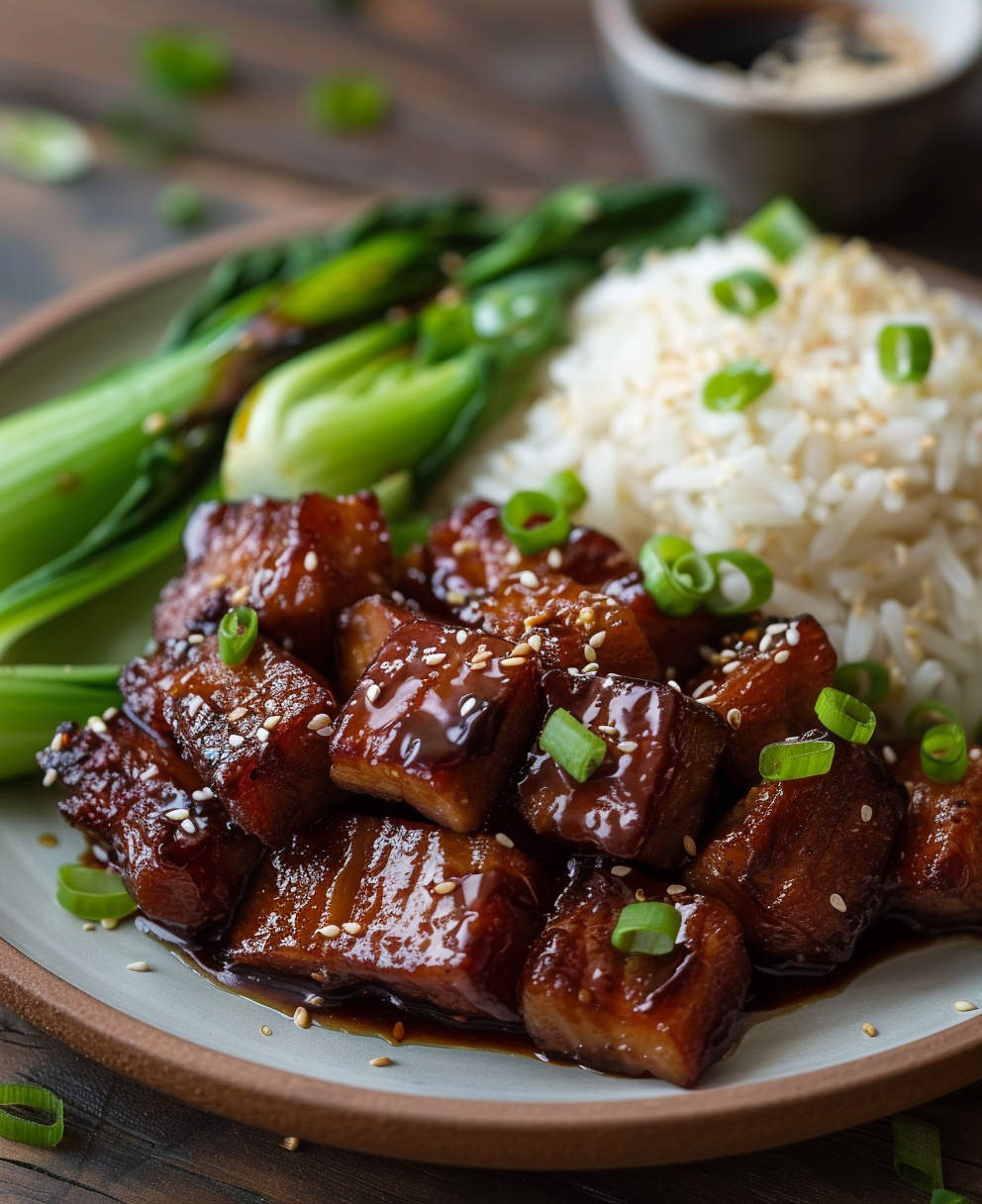
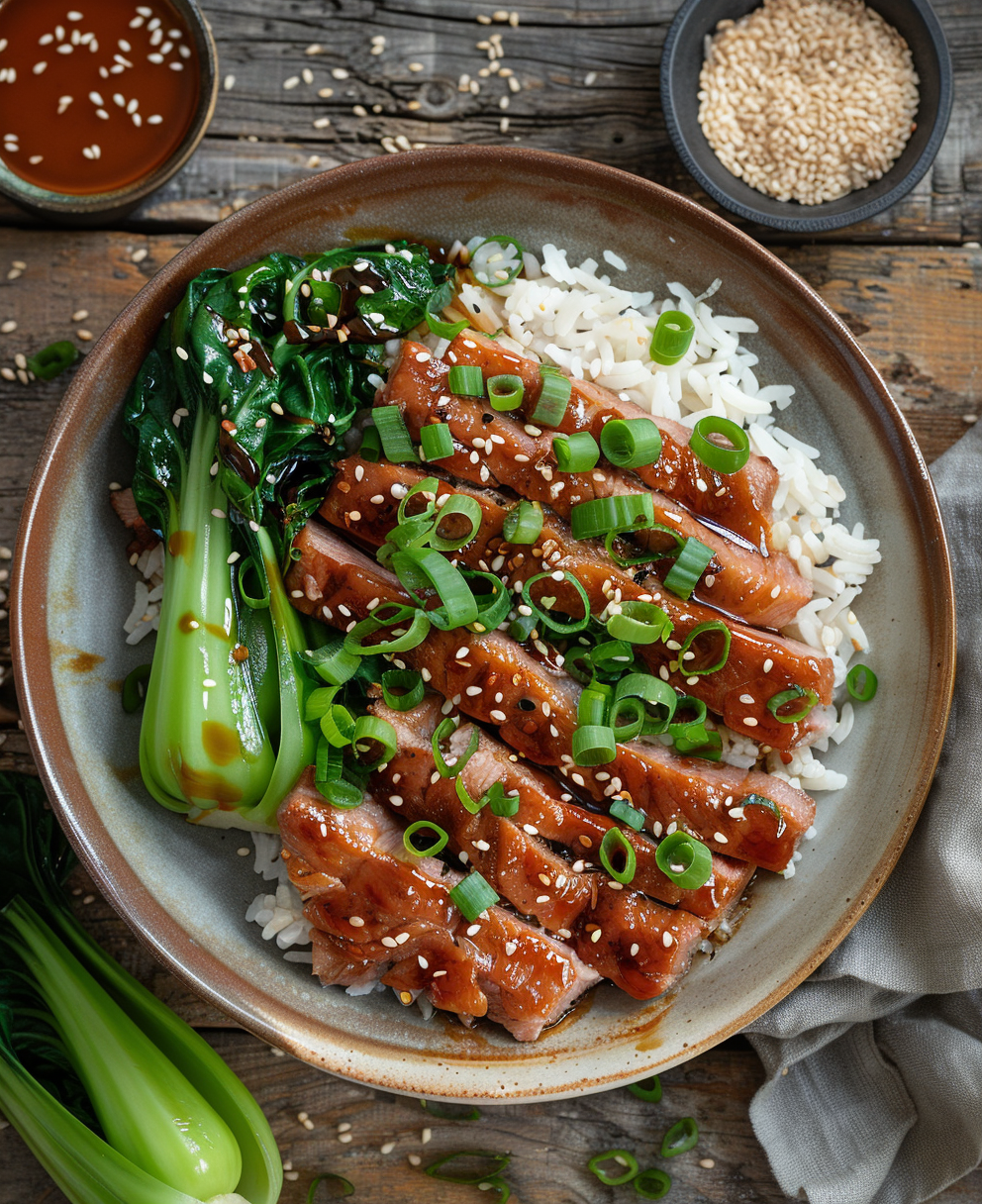
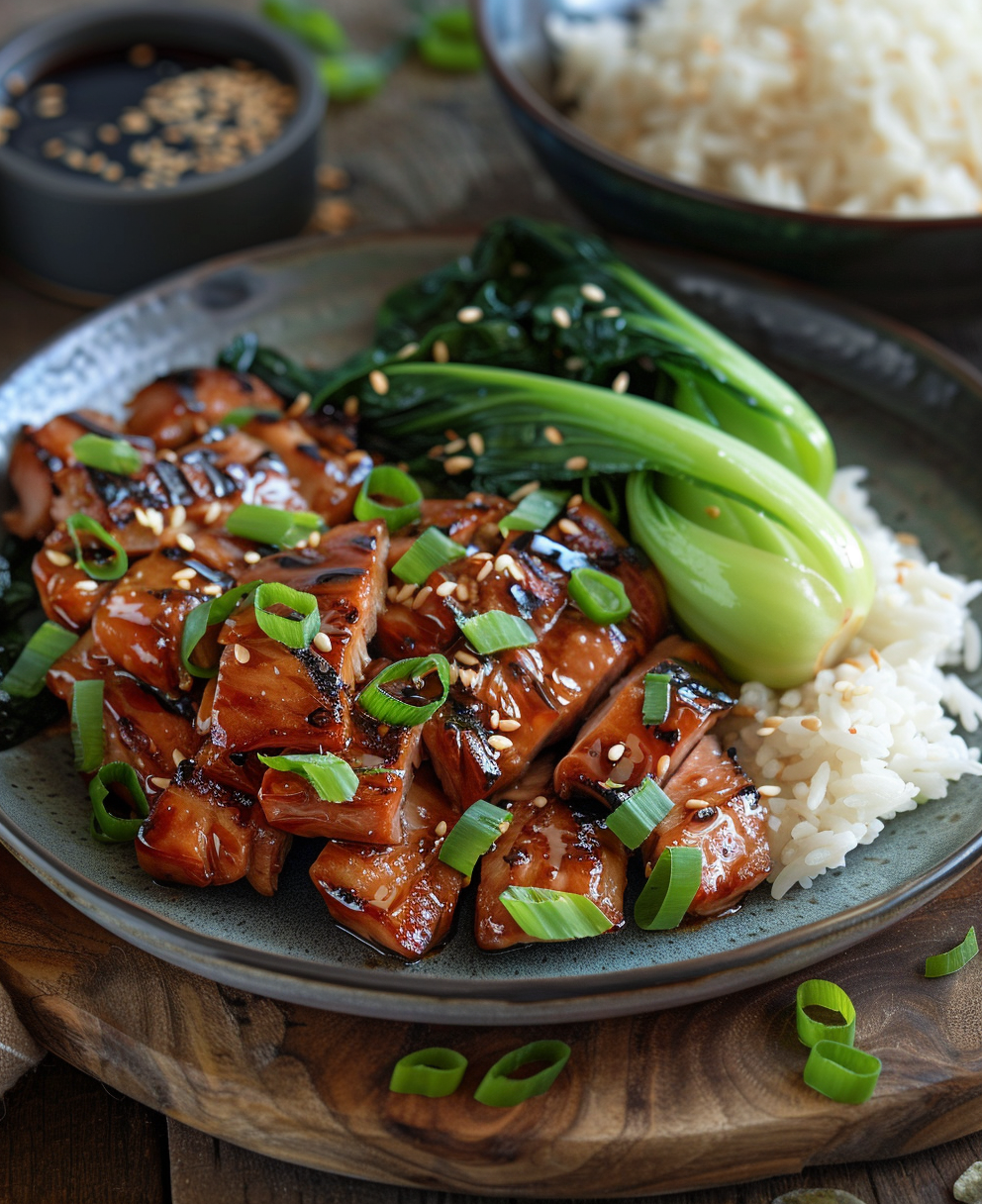
Exploring Variations of BBQ Pork Across Asia
You might think Asian BBQ pork is just one dish, but oh boy, you’d be wrong. It’s more like a whole universe of flavors, each region putting its own spin on the concept. I remember the first time I realized how diverse this dish could be. I was at a food festival in LA, and one stall was serving Chinese BBQ pork belly, while another had something labeled Korean BBQ pork. Both were delicious, but they couldn’t have been more different. Let me break it down for you.
Korean BBQ Pork vs. Chinese BBQ Pork
So, what exactly is Korean BBQ pork? Well, it’s not the same as the glossy red char siu you’re probably picturing. Korean BBQ pork often leans more towards dishes like bulgogi, which translates to “fire meat.” The marinade here is all about soy sauce, garlic, sesame oil, and a generous dose of sugar or honey. Sometimes, pear puree is added to tenderize the meat and give it a subtle sweetness. The result? A smoky, caramelized flavor that’s totally addictive.
Now, compare that to Chinese BBQ pork. While both versions are marinated and grilled (or roasted), Chinese-style BBQ pork—especially authentic char siu—is sweeter and stickier. Think hoisin sauce, five-spice powder, and that signature red hue from fermented bean curd or food coloring. Funny enough, when I first tried making Korean BBQ pork after mastering char siu, I was surprised by how minimalistic the marinade felt. But don’t let simplicity fool you—it packs a punch.
Here’s the thing: these differences aren’t just about taste; they reflect cultural preferences too. In Korea, grilling is often done tableside, creating an interactive dining experience. Meanwhile, in China, BBQ pork fillet is usually pre-cooked and served sliced, perfect for sharing over rice or noodles. Both styles are amazing in their own right, so why not try them both?
Other Regional Twists
Let’s zoom out even further because Asian BBQ pork doesn’t stop at China and Korea. Japan has its take with teriyaki pork, which uses a similar glazing technique but swaps out some ingredients for mirin and sake. Thailand brings us moo ping, skewered pork marinated in coconut milk, lemongrass, and fish sauce—a combo that’s fragrant and slightly tangy. Even Vietnam gets in on the action with thịt nướng, grilled pork belly marinated in a blend of garlic, shallots, and fish sauce.
By the way, have you ever wondered if there’s a connection between these regional variations? Turns out, many of them share common roots in ancient grilling techniques brought over centuries ago through trade routes. For example, the use of soy sauce and ginger can be traced back to Chinese influence, while the love for sweet-savory combos seems universal across Asia.
If you’re feeling adventurous, why not experiment with blending styles? Imagine a fusion dish combining the sticky sweetness of authentic char siu recipe with the umami-rich depth of Japanese teriyaki. Or maybe add a dash of Thai chili to your next batch of slow cooker Chinese BBQ pork. Trust me, creativity knows no bounds when it comes to cooking.
Frequently Asked Questions About Asian BBQ Pork
- Why is Asian barbecue pork red? That vibrant color comes from ingredients like red fermented bean curd or food coloring. These not only enhance the appearance but also symbolize good fortune in many Asian cultures.
- How do Chinese restaurants make pork so tender? They rely on marinating overnight, using fatty cuts like pork belly, and sometimes adding baking soda to break down tough fibers. Low-and-slow cooking methods help too.
- What is BBQ pork called in Chinese? It’s known as char siu, which means “fork-roasted.” This name originates from the traditional method of roasting pork on skewers over open flames.
- What is Korean BBQ pork? Unlike Chinese BBQ pork, Korean versions like bulgogi focus on thinly sliced meat marinated in soy sauce, garlic, and pear. It’s grilled quickly for a caramelized finish.
- Can I use pork tenderloin for Asian BBQ pork? Absolutely! Pork tenderloin works great for leaner dishes, though it may require less cooking time compared to fattier cuts like pork belly.
- Is slow cooker Chinese BBQ pork worth trying? Yes! Using a slow cooker simplifies the process and ensures the meat stays juicy without constant attention.
- What should I serve with char siu pork? Steamed rice, stir-fried vegetables, or lo mein noodles pair beautifully. You can also get creative with sliders or fried rice.
- Where can I find Chinese BBQ pork near me? Check local Asian markets or dim sum spots. Many grocery stores now carry pre-marinated options in their international sections.
- Are there vegetarian alternatives to Asian BBQ pork? Tofu or seitan can mimic the texture, while mushroom-based marinades provide a rich umami flavor similar to traditional recipes.
- What makes authentic Chinese pork recipes stand out? Balance is key—sweetness from honey, saltiness from soy sauce, and aromatics like ginger and five-spice create layers of flavor.
Before we wrap things up, if you’re craving more inspiration, head over to our BBQ Grilling section. There, you’ll find plenty of ideas to keep your grill game strong year-round.
At the end of the day, whether you’re sticking to classic authentic char siu recipe or branching out into Korean bulgogi, the joy lies in experimenting. Cooking is supposed to be fun, after all. So grab those tongs, fire up the oven, and let your taste buds guide you. Whether you’re exploring authentic Chinese pork recipes or trying something entirely new, there’s always room for creativity in the kitchen!

